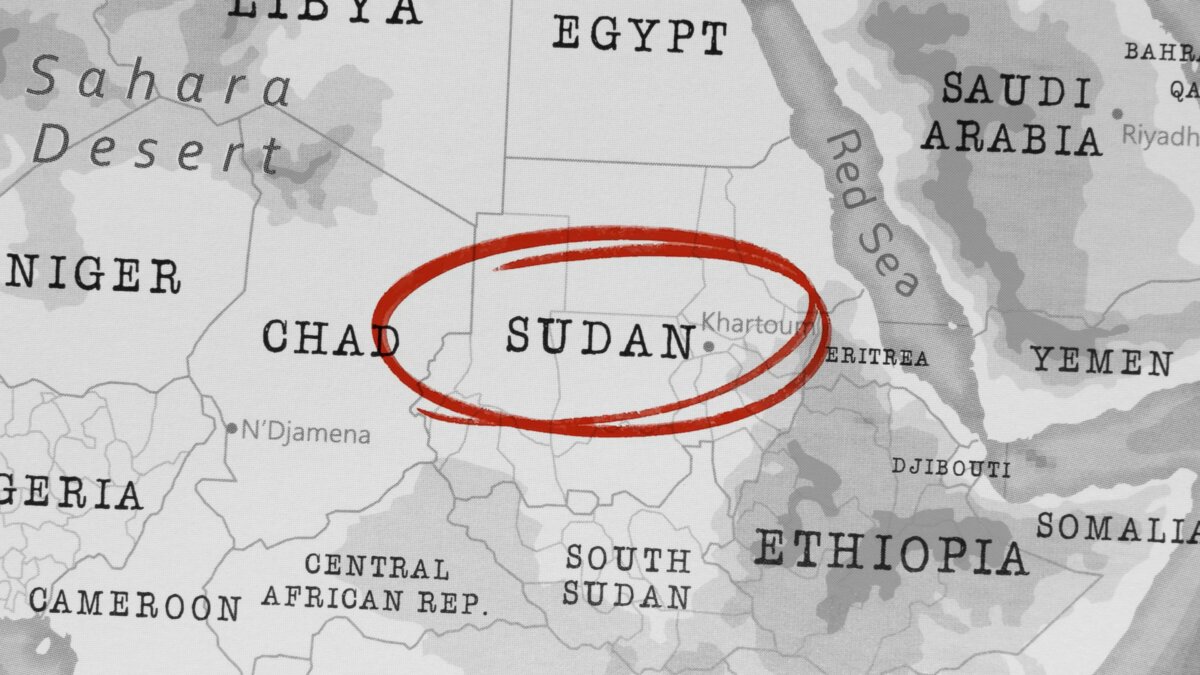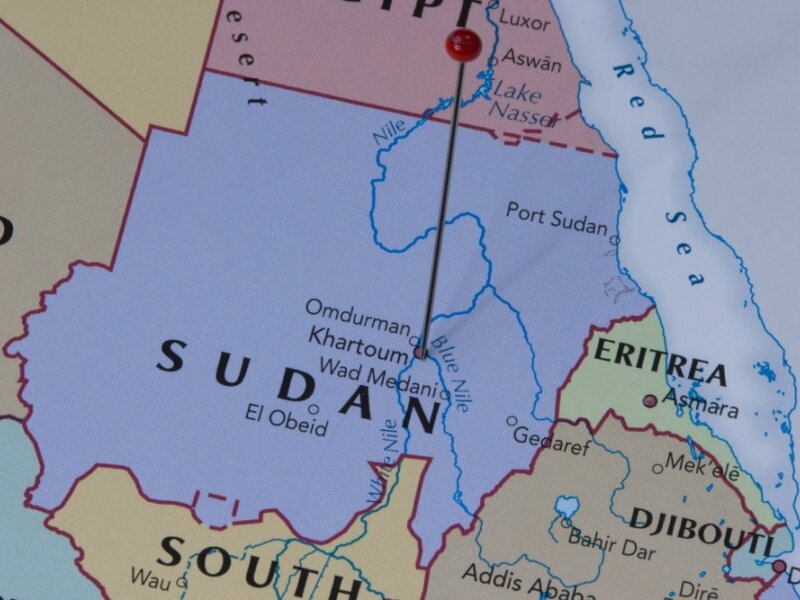Sudan, a country at war
While clashes between SAF and RSF continue, internally displaced persons are on the rise, as well as international migrants and people in need of food, water and medicine. Other sources of concern are the role of Moscow and the ever-present threat of terrorism.

For more than a year, Sudan has been experiencing an extremely severe condition. Due to the civil war that broke out in April 2023, there are now some 17,000 dead in the country, 25 million people in need of humanitarian assistance and 10 million internally displaced persons. To these numbers must then be added the 2.2 million individuals who have fled to Chad (781,693 – 36%), South Sudan (699,337 – 34%) and Egypt (514,827 – 24%), with rising numbers also towards to Ethiopia, Libya and the Central African Republic.
According to the latest report of the UN International Organisation for Migration, the most critical situations were recorded in the central part of the country, nearby the capital Khartoum and in the state of Al Jazirah; and in the West, in the region of Darfur – which had already been the scene of armed clashes, sectarian violence and genocidal practices by the Omar Al-Bashir regime in the past, against the non-Arab ethnic minorities.
Unlike the conflict in Darfur (2003-2020), the first and second Sudanese civil wars (which took place between 1955 and 1972 and between 1983 and 2005, respectively), the current conflict is not based on the secessionist aspirations of a part of the population but is rather a contest for the control of the whole country. To be opposed are, in fact, the Sudan Armed Forces (SAF), led by the President of the Sovereign Council, General Abdel Fattah Al-Burhan, and the Rapid Support Forces (RSF), a paramilitary group under the command of General Mohamed Hamdan Dagalo, known as “Hemedti”.
After helping to end the 30-year Al-Bashir regime in 2019, both Al-Burhan and Hemedti were part of the civilian government headed by Abdalla Hamdok, serving as president and vice-president of the Sovereign Council, respectively. After the new premier was dismissed in October 2021, the two leaders then ruled the country together until 15 April 2023. On that date, the growing tensions between the two factions escalated into a full-fledged armed conflict, first localised in the capital Khartoum and later extended to the entire national territory.
To date, neither side has managed to prevail. The SAF control the border with Libya, the central-southern area, almost all of Darfur and the main districts of the capital Khartoum. In contrast, the SAF are mainly concentrated in the Red Sea coastal area and the south-eastern part of the country. There are also some portions of territory in the hands of local militias and rebel groups.
Internationally, the civil war has attracted the attention of numerous powers, which support economically and militarily one side or the other. According to various reconstructions, for example, the SAF would enjoy the support of Egypt, Saudi Arabia and Iran, while the United Arab Emirates would be closer to the RSF.
More ambivalent, however, is the position of the Russian Federation. Moscow, which has been very active in Sudan since the time of Al-Bashir, initially provided support to Hemedti through the Wagner Group, with the main purpose of securing the country’s gold sites, long exploited by the Kremlin to finance the war in Ukraine and to mitigate the impact of Western sanctions. It is true, however, that recently there have also been numerous talks between Al-Burhan’s SAF and the Russian leadership, which has long been interested in the country to project its influence there and to establish a naval base in Port Sudan, on the Red Sea. Given its geographic location, Sudan could in fact represent the link between North Africa, the Sahel and the Horn – three areas where Moscow is pursuing its penetration and interference activities, which could also be exploited by the Kremlin to threaten European energy security and exacerbate the migratory flows. As for Port Sudan, it could turn out to be another base at the Kremlin’ disposal, in addition to the facility in Tartus, in Syria, and the one under negotiation in Tobruk, in Libya. A base in Port Sudan could provide Moscow with a first-rate strategic-military position to influence commercial and military security in the Mediterranean.
As far as the West is concerned, on the other hand, since the beginning of the conflict Washington and Brussels have been directing their efforts to ensure humanitarian aid access to the country and to facilitate peace talks and civil transition. To this end, the White House created the “Jeddah Platform”, of which Saudi Arabia, SAF and RSF are members in addition to the United States; France and Germany, on the other hand, in agreement with the EU, organised an international humanitarian conference for Sudan in Paris on 15 April 2024, raising more than two billion euros to be allocated to the basic needs of the population.
Yet these efforts have not yet been able to resolve the stalemate. On the contrary, with the recent intensification of clashes, the numbers of the humanitarian catastrophe are set to increase. In North Darfur, for example, violent fighting is ongoing, climaxing in the town of El-Fasher – the last western bastion of the SAF, under siege by the RSF. Here, where temperatures often reach 50 degrees Celsius, more than 2.5 million people, including 1 million displaced persons from the surrounding areas, have found refuge in the city as the fighting in the region grew in intensity. Civilian infrastructure such as schools and hospitals have been targeted, and the deprivation of water and food resources has been used as a military tactic. There are also growing reports of sectarian violence against minorities in the region, to the extent that the UN Secretary General’s Special Advisor on the Prevention of Genocide, Alice Wairimu Nderitu, has repeatedly stated that “a genocide is occurring or is about to occur”.
In addition to the ongoing humanitarian catastrophe, it persists the risk that the country will once again become an incubator for terrorism in the region.
Indeed, Islamic fundamentalism has been rooted in Sudan since the late 19th century, during the Ottoman-Egyptian administration, when Muhammad Ahmad, known as the “Mahdi”, proclaimed the first jihad and founded a government based on the sharī‛a. After fifteen years of resistance, the Mahdist movement was defeated by the Anglo-Egyptian army and reorganised into a Sufite group linked to the Egyptian Muslim Brotherhood.
Following the achievement of independence in 1956, there were mobilisations in Sudan, mostly students, against Abbud’s military regime, organised by cells of the Muslim Brotherhood. The main inspirer of the protests was Hassan Al-Turabi, who later founded the Islamic Charter Front that would lead the country until 1968. After a coup d’état, Al-Turabi’s party was banned, and he was forced to leave Sudan. He returned, however, at the end of the 1970s and founded the National Islamic Front, whose ranks included Al-Bashir, who came to lead the country in 1989. During this period, Islamic fundamentalism reached its peak: sharī‛a was imposed and the Popular Arab and Islamic Congress was created, which coordinated all revolutionary Islamic movements.
Starting in 1991, Sudan became a real hub of terrorism, hosting exponents of various movements, including Osama Bin Laden, the leader of Al-Qaeda. This led to the country’s inclusion, until the end of 2020, on the list of state sponsors of terrorism, with all the serious economic consequences that this entailed – in particular, exclusion from aid from the International Monetary Fund and the World Bank.
Despite the ousting of political Islam from the government in 2019, recent rumours report, however, that the civil war between Hemedti and Al-Burhan is allowing Islamists to reorganise, especially in some areas where they have always enjoyed greater influence, also due to the social and economic instability in which the Sudanese population finds itself since the beginning of the conflict. A similar discourse can be made with Daesh, which is allegedly exploiting the territory of Sudan to regroup and increase its influence in the African continent. In addition to carrying out attacks in Africa, terrorist groups active in the country could also exploit the Red Sea coastline to undermine the security of commercial ships and submarine infrastructure, similar to what the Houthis have done in Yemen. This is all the more likely if there is no widespread control of either side on the Sudanese coast.



